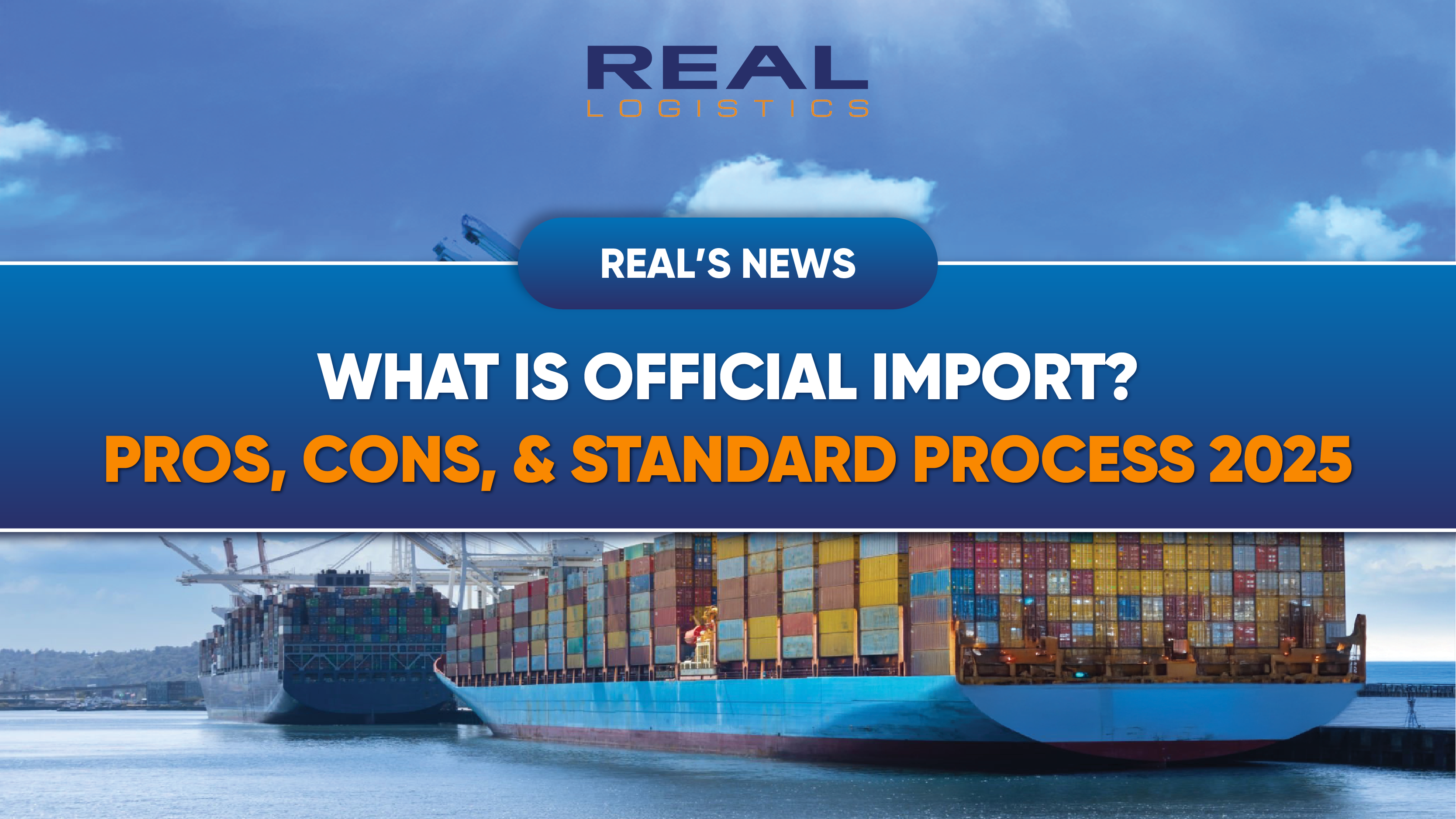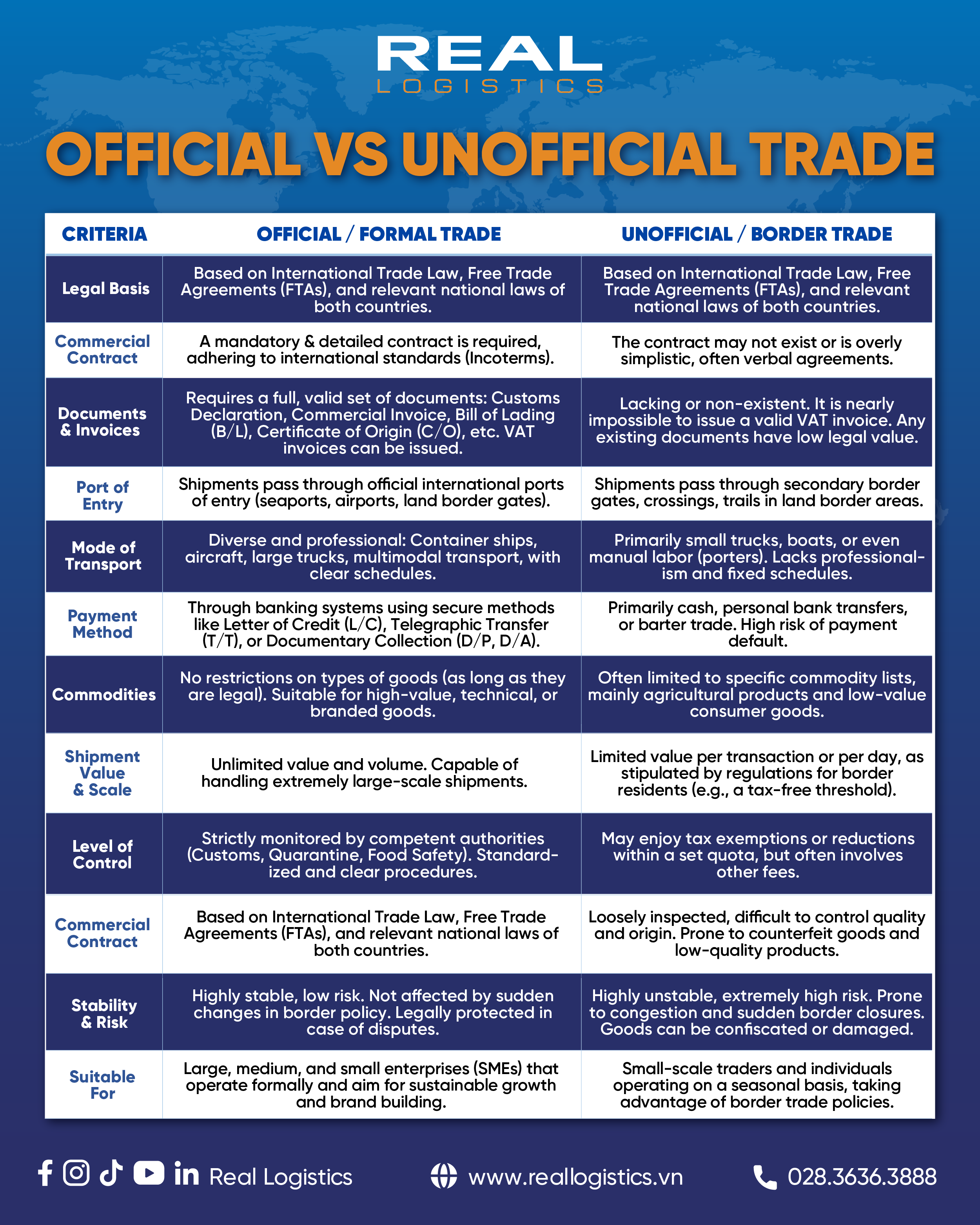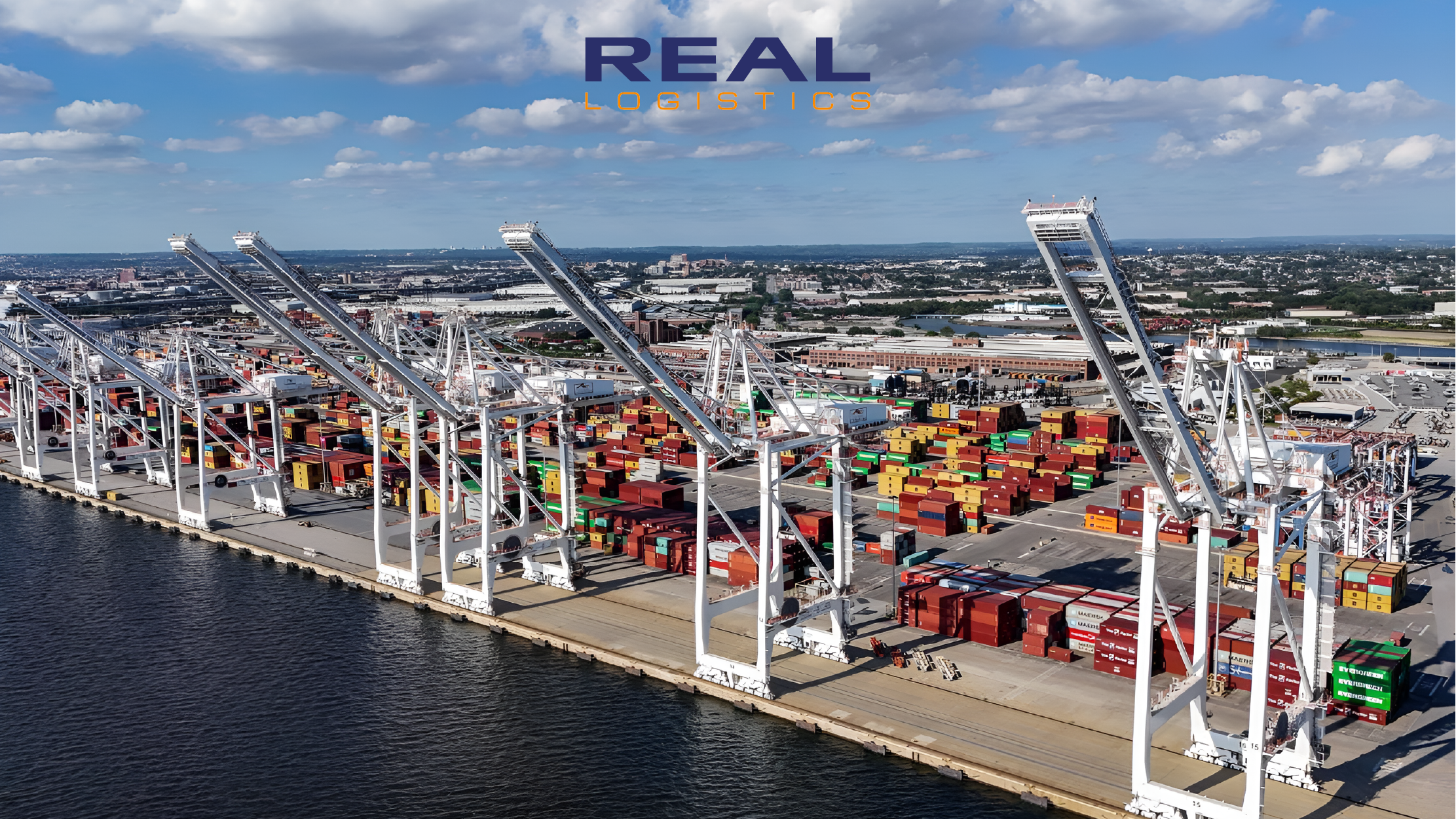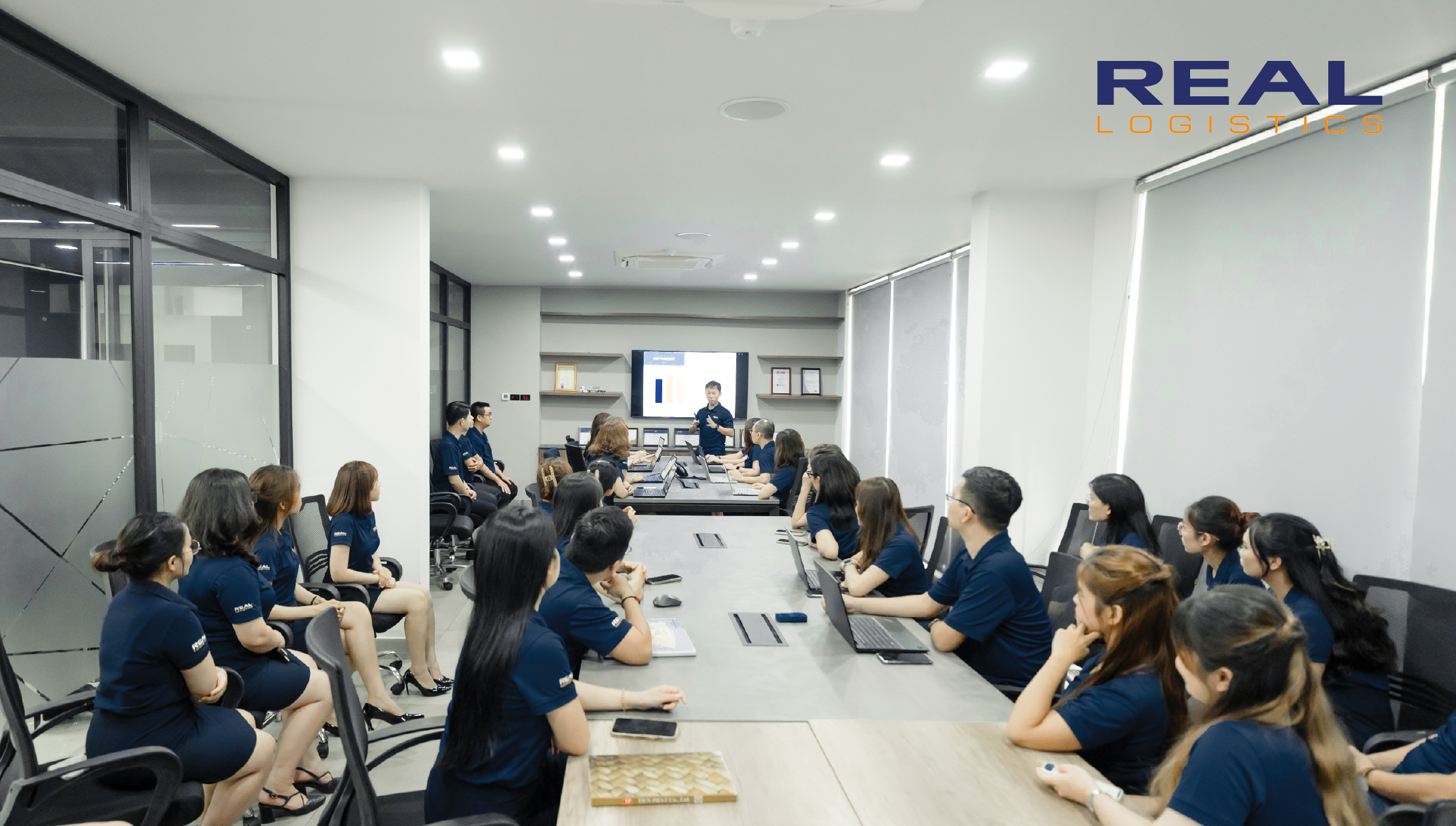What is Official Import? Pros, Cons, and Standard Process 2025
 1. What is Official Import?
1. What is Official Import?
"Official/formal trade" refers to the movement of goods across national borders in strict compliance with legal regulations on customs and taxes. This legal form of trade ensures goods circulate without prohibition or violation.
This form of transaction plays a pivotal role in foreign trade, ensuring legality, product quality, and market standard compliance. Applying official trade helps parties avoid risks like counterfeit or low-quality goods, builds trust, and fosters sustainable commerce.
Although not legally defined, "official" and "unofficial" (or "border trade") are commonly understood by their characteristics:

Note: These characteristics are relative; some informal trade shipments can still have large volumes or involve bank payments.
2. Advantages and Disadvantages of Official Import
Compared to informal trade, official import offers significant assurances.
2.1. Advantages of Official Import
Official import is a transparent, professional international trading method, applicable to any individual/organization meeting legal and financial conditions. This state-recognized legal import method ensures legal safety, product quality, and potential tax incentives (if origin conditions are met).
Key characteristics:
- Foreign Trade Contract: Mandatory official contract between Vietnamese and international partners.
- Complete Documentation: Includes Invoice, Packing List, Bill of Lading, C/O, C/Q, etc.
- Electronic Customs Declaration: Performed via the VNACCS/VCIS system.
- Tax Obligations: Full payment of import duties, VAT, special consumption tax (if applicable).
- Strict Inspection & Supervision: Goods undergo rigorous inspection by customs and specialized agencies.
Competitive Advantages:
- Credibility & Legality: Full documentation proves origin, builds professional image, and fosters trust.
- Legal Protection: Goods are not at risk of confiscation or penalties; legal support is available for disputes.
- Access to Large Distribution Channels: Meets criteria for supermarkets, e-commerce platforms; VAT invoices facilitate large contracts.
- FTA Tax Incentives: Enjoy import duty exemptions/reductions from FTAs (EVFTA, CPTPP...) with valid C/O, reducing costs and increasing profits.
- Easy Quality Control & Announcement: Streamlines quality announcement, specialized inspection processes, and market expansion (especially for medical, food, cosmetics sectors).
- Proactive Marketing: Freedom to publicly promote products without legal concerns, building long-term consumer trust.
2.2. Disadvantages of Official Import
- Complex Process: Numerous procedures, requiring time for preparation, and goods can only be received after customs clearance (except in special cases).
- Higher Costs: Incurs full taxes, customs fees, and other compliance costs compared to informal trade.
- Strict Control: Goods are subject to rigorous supervision, leading to less flexibility in transport and handling.

3. Standard Official Import Customs Procedures
While specific procedures may vary slightly by business and goods type, the core steps generally follow this common process:
Step 1: Prepare Import Documentation
Gather all necessary documents:
- Commercial Contract,
- Commercial Invoice,
- Packing List,
- Bill of Lading,
- Customs Declaration,
- Letter of Credit (L/C – if applicable),
- State Budget Payment Slip,
- Certificate of Origin (C/O),
- Freight Invoice,
- Quarantine Certificate (if required).
Step 2: Declare Customs Import Declaration
Businesses submit electronic import declarations via the customs system. First-time importers need to update information with the General Department of Customs, purchase a digital signature token, and register an account. After declaring, monitor the declaration status and await customs channeling results:
- Green Channel (Code 1): Automatic customs clearance.
- Yellow Channel (Code 2): Submit related documents for customs inspection.
- Red Channel (Code 3): Submit documents and undergo physical inspection of goods.
Step 3: Pay Taxes and Obtain Delivery Order
After declaration channeling, pay full import taxes (electronically, via bank, or treasury). Simultaneously, obtain the delivery order from the carrier/agent, with required documents:
- Company Introduction Letter,
- Original/Stamped Bill of Lading,
- Arrival Notice.
For containerized goods, add:
- Container Loan Slip,
- Empty Container Return Slip (if goods are offloaded at the business's warehouse)
- Related Invoice.
Step 4: Complete Customs Clearance Procedures at Port/Airport
Prepare all aforementioned documents for customs clearance at the port/airport. Ensure all information is accurate and consistent to avoid delays in approval and release.
Step 5: Print Handover Slip, Clear Customs Supervision, and Retrieve Goods
Once the declaration is cleared, access the General Department of Customs portal to print the declaration barcode and container handover slip (EIR).
Then, present these slips to the customs supervision unit for clearance, confirming goods have completed procedures and are ready to leave the supervised area.
Step 6: Reclaim Container Deposit
If a deposit was paid for container rental, upon returning the empty container to the designated port, the driver receives an empty return confirmation.
To reclaim the deposit, present:
- Introduction Letter,
- Empty Return Slip,
- Container Loan Slip to the shipping line.
The shipping line will refund the deposit if the container is undamaged; otherwise, fees will be charged as per agreement.
Step 7: Finalize Dossier and Bank Settlement
Upon completion of all import procedures, gather all relevant documents and submit them to the bank. The bank will confirm full payment or partial payment. For any remaining payments, present necessary documents at the next payment cycle to fulfill financial obligations.
Đọc thêm: Official vs. Unofficial Imports: Which One to Choose?
4. Important Notes for Official Import Procedures
- Official import requires thorough legal preparation and can be time-consuming.
- Businesses must ensure all documents are complete, accurate, and consistent to expedite customs clearance and avoid issues.
- Additionally, before proceeding, carefully check if the goods are on the list of prohibited imports to prevent legal risks and wasted time on inspection.

5. Choosing an Optimal Logistics Solution for Official Import
Real Logistics is a specialized provider of comprehensive official import services, assisting from document preparation and customs declaration to final goods delivery to the warehouse.
Our Strengths:
- Experienced & Professional Team: Our experts are seasoned in import/export, understanding the latest procedures, supporting complex documentation, and ensuring legal compliance.
- Extensive Global Network: A vast network of partners and agents worldwide ensures efficient access and handling of goods at all international ports and airports.
- Flexible Custom Solutions: We provide tailored official import solutions, optimizing the import process and meeting specific client needs.
- Dedicated After-Sales Service: We offer professional after-sales support, assisting with any issues even after customs clearance, ensuring client satisfaction.
—————————————
Real Logistics Co.,Ltd
👉 Facebook: Real Logistics Co.,Ltd
☎️ Hotline: 028.3636.3888 | 0936.386.352
📩 Email: info@reallogistics.vn | han@reallogistics.vn
🏡 Address: 39 - 41, B4 Street, An Khanh Ward, Ho Chi Minh, Vietnam
G2 Floor, No. 51, Quan Nhan Street, Thanh Xuan Ward, Hanoi

